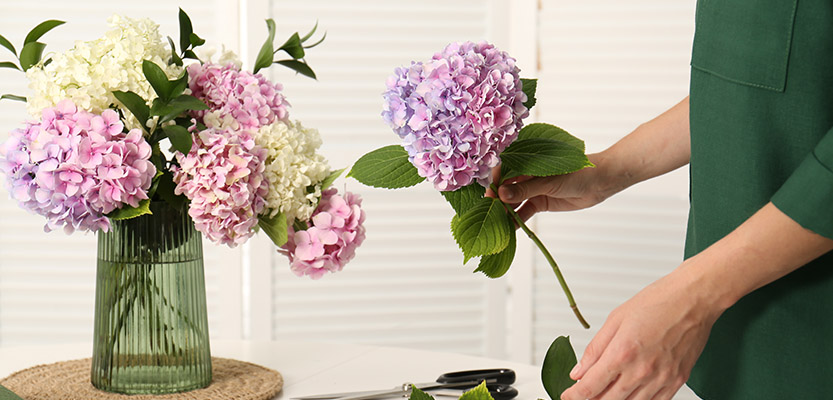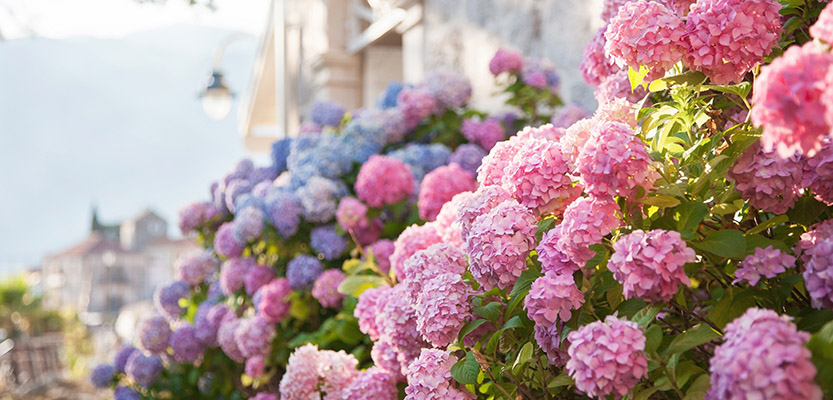Common Names:
Hydrangea
Hortensia
Scientific Name:
Hydrangea spp.
Family & Genus:
Family: Hydrangeaceae
Genus: Hydrangea
Description:

Hydrangeas are characterized by their large, globe-shaped flower clusters made up of smaller individual blooms. They come in a variety of colors, including blue, pink, white, purple, and green, with some varieties capable of changing color depending on soil pH. The blooms are supported by woody stems and surrounded by lush, green foliage. Hydrangeas add a sense of fullness and elegance to gardens and floral arrangements.
Habitat & Origin:
Native to Asia and the Americas, Hydrangeas thrive in temperate climates with well-drained, fertile soil. They prefer partial shade but can tolerate full sun with sufficient moisture. Japan is particularly famous for its cultural association with Hydrangeas, especially during the rainy season.
Symbolism & Meaning:

Gratitude and Heartfelt Emotions: Often used to express deep appreciation and understanding.
Apology and Regret: In some cultures, they symbolize remorse or a plea for forgiveness.
Abundance and Prosperity: The large, voluminous blooms convey abundance and wealth.
Changeability: Their color-shifting properties make them a symbol of adaptability and transformation.
Uses:
Ornamental: Hydrangeas are a popular choice for hedges, borders, and container gardening.
Cut Flowers: Their full, showy blooms make them a favorite for bouquets and wedding arrangements.
Dried Flowers: Hydrangeas retain their beauty when dried, making them ideal for long-lasting decor.
Flower Care:

To keep cut Hydrangeas fresh:
Submerge the stems in water for several hours before arranging.
Recut stems at an angle and place them in lukewarm water.
Mist the blooms regularly to maintain hydration, as they absorb moisture through their petals.
Flowering Season:
Hydrangeas bloom from late spring to early autumn, with peak displays in midsummer.
Varieties & Hybrids:

Bigleaf Hydrangea (Hydrangea macrophylla): Known for its large, colorful flower heads that change with soil pH.
Pee Gee Hydrangea (Hydrangea paniculata): Features cone-shaped clusters and is more sun-tolerant.
Oakleaf Hydrangea (Hydrangea quercifolia): Recognized for its lobed leaves and white flowers that fade to pink or purple.
Smooth Hydrangea (Hydrangea arborescens): Includes the popular ‘Annabelle’ variety with massive white blooms.
Climbing Hydrangea (Hydrangea petiolaris): A vigorous vine with fragrant white flowers.
Interesting Facts:
Hydrangeas can change color based on soil pH: acidic soils produce blue blooms, while alkaline soils result in pink.
They are toxic to humans and pets if ingested, containing compounds that can cause illness.
In Japan, Hydrangeas are associated with the rainy season and symbolize perseverance and grace.
The name “Hydrangea” comes from the Greek words hydor (water) and angeion (vessel), referring to their water-loving nature.









